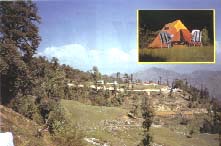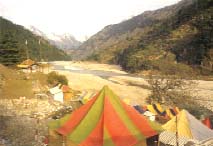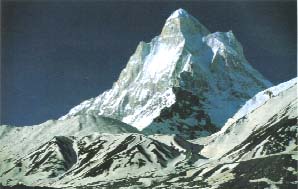ACCOMMODATION
Garhwal Mandal Vikas Nigam has hotels and Tourist Rest Houses at over 60 places
in this region. From mid-April to end of June (referred to as the 'Peak
Season') accommodation is on the higher side.
Your typical budget would be as:
- Deluxe Room Rs. 400 to 600/-
- Deluxe (non-Ac Rs. 350 to 500/-
- Executive Rs. 250 to 300/-
- Family Suite Rs. 500 to 630/-
- Dormitory Rs. 35 to 80/-
- Tent/Huts Rs. 40 to 200/-
TRANSPORT
A variety of Deluxe Coaches are available with the Nigam. A 15 seater (AC)
Coach charges Rs. 3500/- per day for 250 kilometers in the plains or 200
kilometers in the hills.
Taxi rates vary according. to road conditions, so while a plain metalled road
is Rs. 4/- per kilometre in a diesel car, a petrol driven Contessa is Rs. 8/-
per kilometre. The rates go up in forest or rough roads.
BOOKINGS:
DELHI
PRO GMVN, U.P. Tourism
Office,Chandralok Bidg.
36, Janpath NEW DELHI
TEL: (01 1) 3326620, 3322251,3711296
FAX: 91-011-3711296
DEHRADUN
The G.M (Tourism)
G. M. V. N. Ltd.
74/1, Rajpur Road,
Dehradun
TEL: (0135)
|




